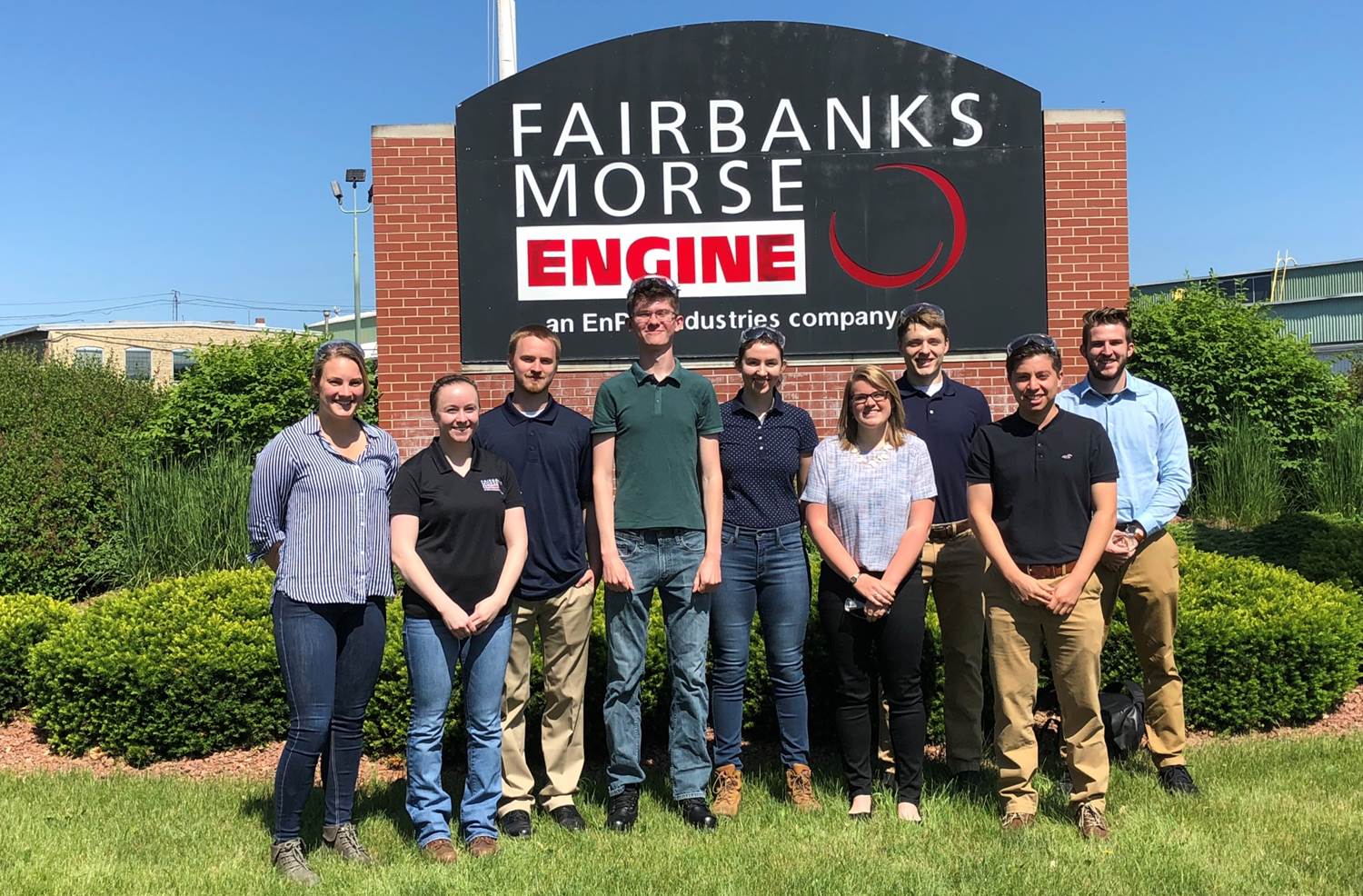Fairbanks Morse Engine Internship June-August 2018
Overview
I worked in the Research and Development department on projects directly related to the Trident Opposed Piston Engine. These projects consisted of conducting a failure analysis of an emissions testing probe before redesigning it, speeding up the startup of the engine, and creating a piston assembly cart to help technicians put in and take out pistons.
Failure analysis and redesign of emissions testing probe

Situation
Prior to my internship at Fairbanks Morse Engine (FME), an engineer designed an emissions probe to sample the exhaust gases leaving the 12 cylinders featured on the Trident opposed piston engine. The purpose of this sampling was to give engineers at FME insight in the amount of lubrication oil is consumed in the process of running the engine. To test the probes, the engine was ran and each of the twelve probes sheared off due to unknown reasons at the time.
Task
I needed to conduct a failure analysis of the probe to determine the cause of the failure and redesign this probe to maintain structural integrity.
Action
I began with analyzing the loading of the emissions testing probe when the engine was running. Hand calculations were used to take internal cuts of the probes to analyze the shear forces generated by the hot exhaust fluids dynamically loading the entire length of the probe. This lead to the finding that the dynamic fluid loading of the probe made a negligible contribution to the shear stresses experienced by the probe. Next, the Trident engine exhaust cycles at a certain frequency so mechanical resonance due to the rhythmic loading was investigated. However, the natural frequency of the probe was far off from the rhythmic loading, therefore, this mode of failure did not explain what was experienced by the probes.
Lastly, mechanical resonance due to vortex shedding around the cylindrical surface of the probe was investigated. Once a hand calculation revealed the possibility of the probe failing due to vortex shedding, an Excel model was created to simulate the impact of design changes to the probe.
As a result of the model, I was able to make a new design that was immune to resonance due to vortex shedding. I prepared a proposal for funding the purchasing of parts for the probes to the Research and Development team. This gave me experience in presenting professional findings.
Results
The Research and Development team at FME agreed with my failure analysis and funded the new design I had created for the emissions testing probe. I worked with purchasing to order these parts and drafted mechanical drawings to instruct the automotive technicians how to manufacture each probe. I selected the necessary fittings and tubing needed for this design and oversaw the implementation of the design into the new probes. Now the engineers at FME will be able to sample exhaust gases using these probes to understand the efficiency of their combustion system.
